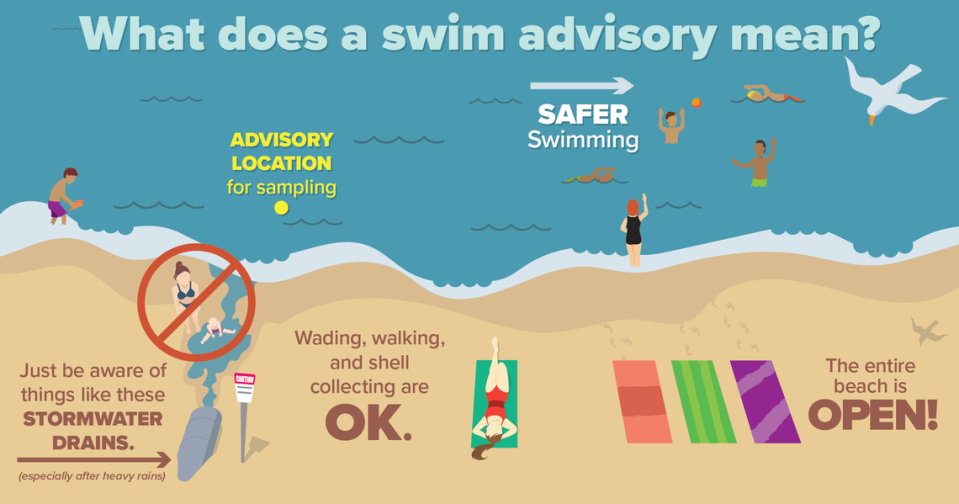If you’re headed to a beach on the Grand Strand this summer, you might have heard about bacteria levels, particularly following storms. But experts say, even when swimming advisories are in place, beaches are safe for summer fun.
Here’s everything you need to know about safe beach water in the Myrtle Beach area.
According to the South Carolina Department of Health and Environmental Control (DHEC), the department tests water samples from more than 120 beach locations between Cherry Grove Beach and the Southern end of Hilton Head Island. These tests are performed once or twice a week throughout the swimming season, defined as May through October.
The water collections test for the presence of enterococci, a bacteria found in the intestines of many animals, including pets and humans. While the bacteria is not typically harmful to humans, elevated levels of enterococci can indicate possible fecal waste contamination and the presence of other organisms that can cause diseases like gastrointestinal illnesses or skin infections, DHEC says.
While the area’s roughly 60 miles of beaches are well-monitored and safe, here’s what you should know about when and where you should avoid swimming.

Short-term swimming advisories
DHEC issues short-term advisories at sites where there aren’t already long-term advisories and:
-
A sample exceeding 104 CFU (colony forming units) per 100 ml of water is collected near a potential source of bacteria like a stormwater drain
-
A routine sample exceeding 500 CFU per 100 ml of water is collected
-
Multiple samples exceeding 104 CFU per 100 ml over two consecutive days are collected
“When a temporary swimming advisory is issued, it doesn’t mean a beach is closed — it means there is an isolated spot where swimming isn’t advised at that time,” DHEC media relations told the Sun News in an email. “Most advisories are temporary, lasting only a day or two.”
Long-term swimming advisories
DHEC issues long-term advisories at sites where more than 10% of enterococcus data collected from the previous five years exceeds the recreational standard for enterococci presence. Long-term advisories are assessed annually.
If an advisory is issued
The most common culprit of bacteria increases is simple rainfall.
“Rainstorms create runoff and can temporarily increase the bacteria count in the water … within 24 to 72 hours, the water quality levels for our beaches return to their normal levels (and well within state guidelines),” according to the Visit Myrtle Beach website.
If an advisory is issued following heavy rain, it doesn’t mean the beach is closed. As long as you have no open cuts or wounds, you’re free to swim as long as you keep your head above the water.
Other advisories are related to swashes, the storm water outfall drains on beaches. In these areas, swimming is not advised within 200 feet of either direction of swashes.
However, even in places where advisories are issued, other beach day activities like walking, wading, fishing and shell collecting are encouraged.
For the latest information on swimming advisories, visit the South Carolina Beach Access Guide.
Source Agencies


